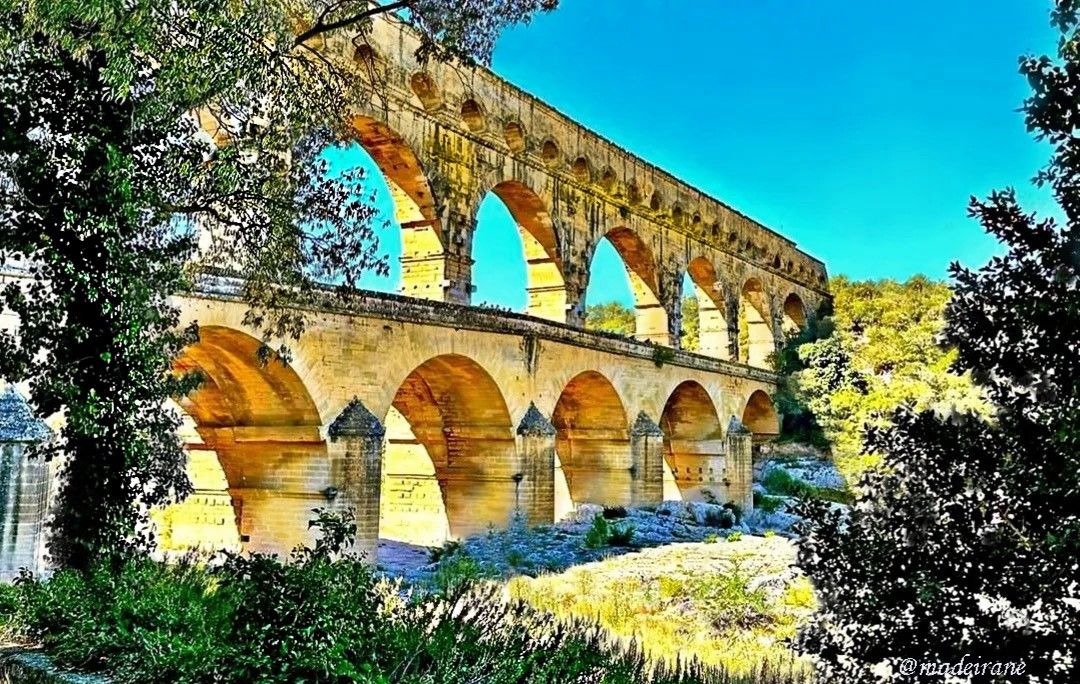Continuing to write about French Provence, I have to mention Pont du Gard aqueduct. I appreciate Provence even more because it is a large treasury of monuments of ancient Roman architecture. Monuments that amaze with their grandeur and the condition in which they are maintained.
In Provence, I was able to drive through many ancient Roman “addresses”: Orange, Saint-Rémy de Provence, Arles... This list also included a monument from the UNESCO World Heritage List - the legendary Pont du Gard aqueduct. And it was not just marked to visit, but was highlighted with a red marker and marked with an exclamation mark - as a place for a MANDATORY visit.
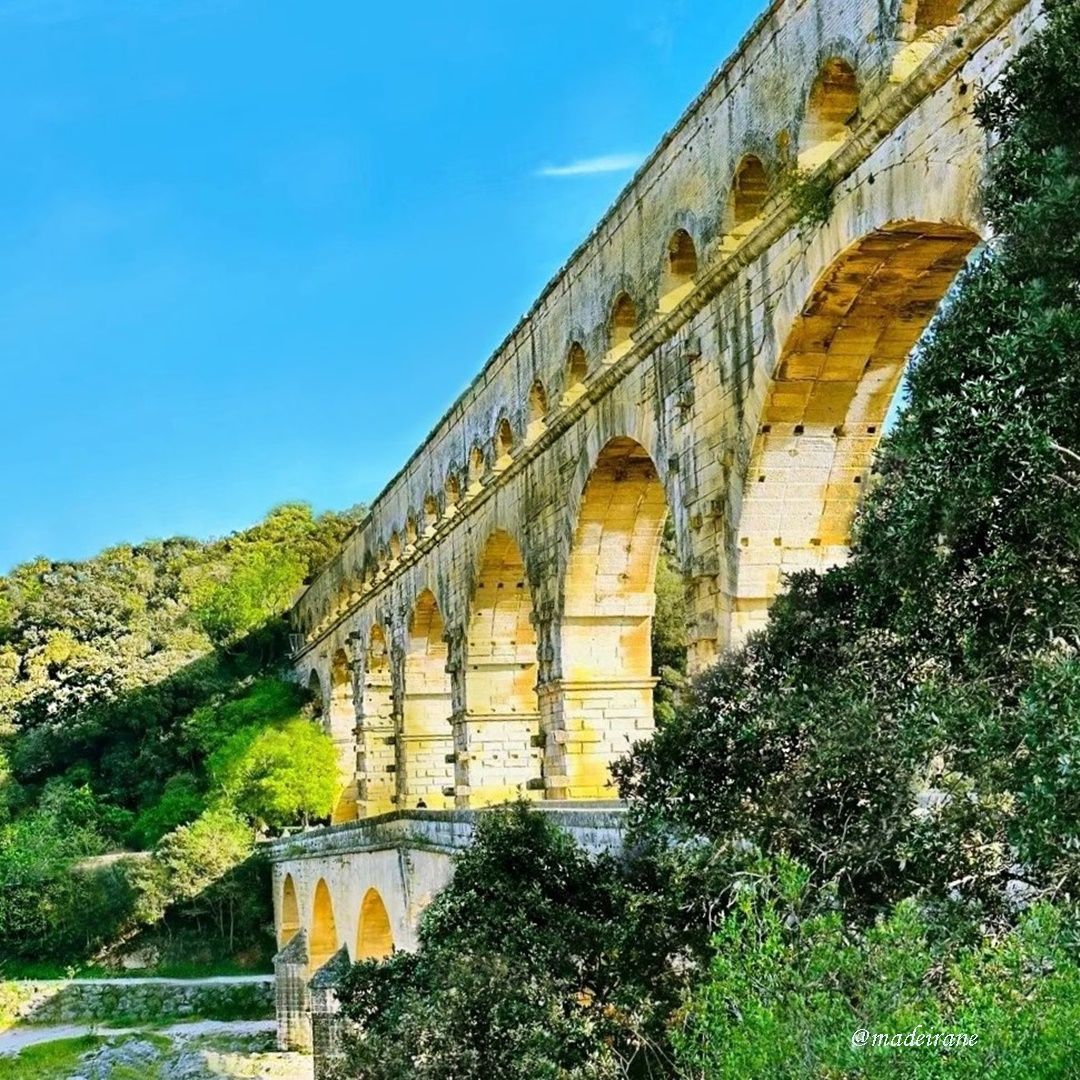
Having arrived in Provence, my husband and I made it a rule to go on excursions early in the morning in order to shorten our stay under the mercilessly scorching sun and see as much as possible. From Avignon, where we temporarily settled at that time, we drove about half an hour by car.
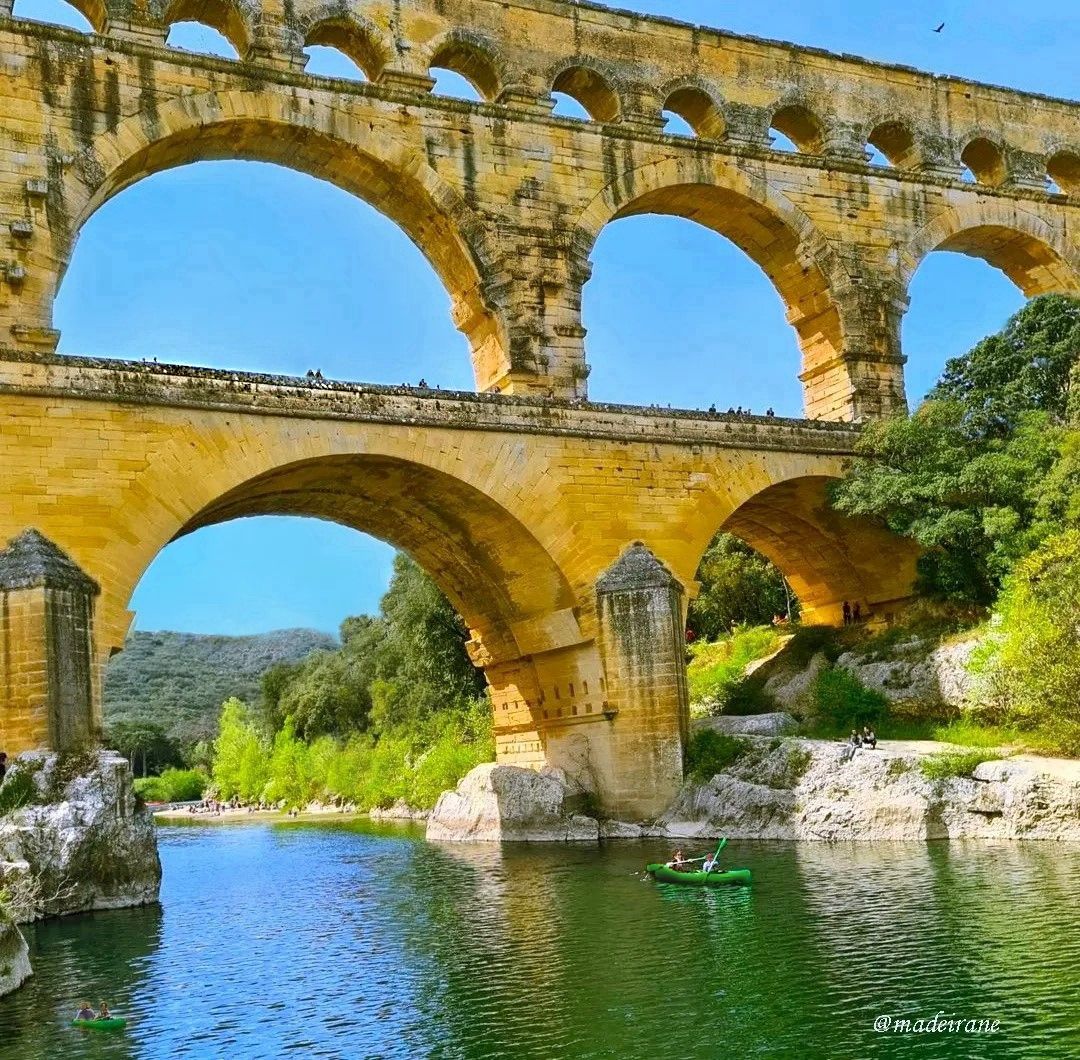
Entrance to the territory adjacent to the aqueduct is paid. We took a parking ticket from a machine specially designed for this, but we did not pay for it immediately, but before leaving.
The cost of a parking ticket depended on the type of your vehicle and even the time of day. So, for a family or company of two to five people arriving in the same car, the daytime rate was 18 EUR, and the evening rate was 10 EUR. In other words, the larger the company, the more profitable it is to come here per person.
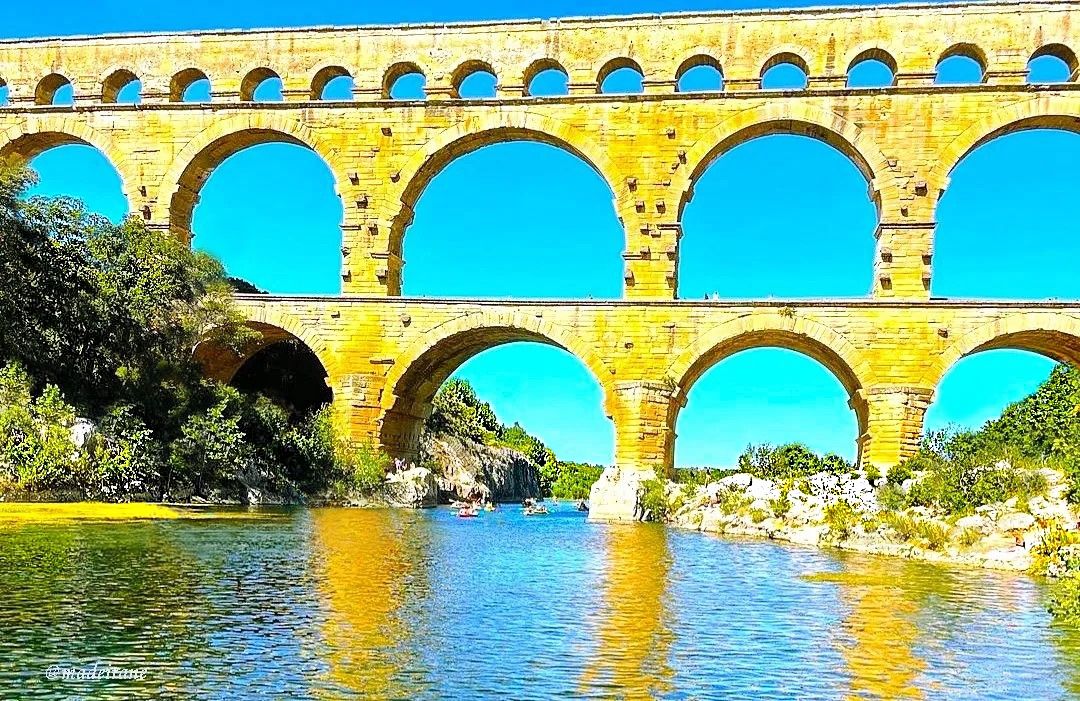
We drove up to the aqueduct (more precisely, to the bridge, which was an important part of it) before visiting the city of Nimes, that is, to the city for which it was intended. The road from the entrance to the aqueduct was a shady plane tree alley, adjacent to picturesque rocks with caves.
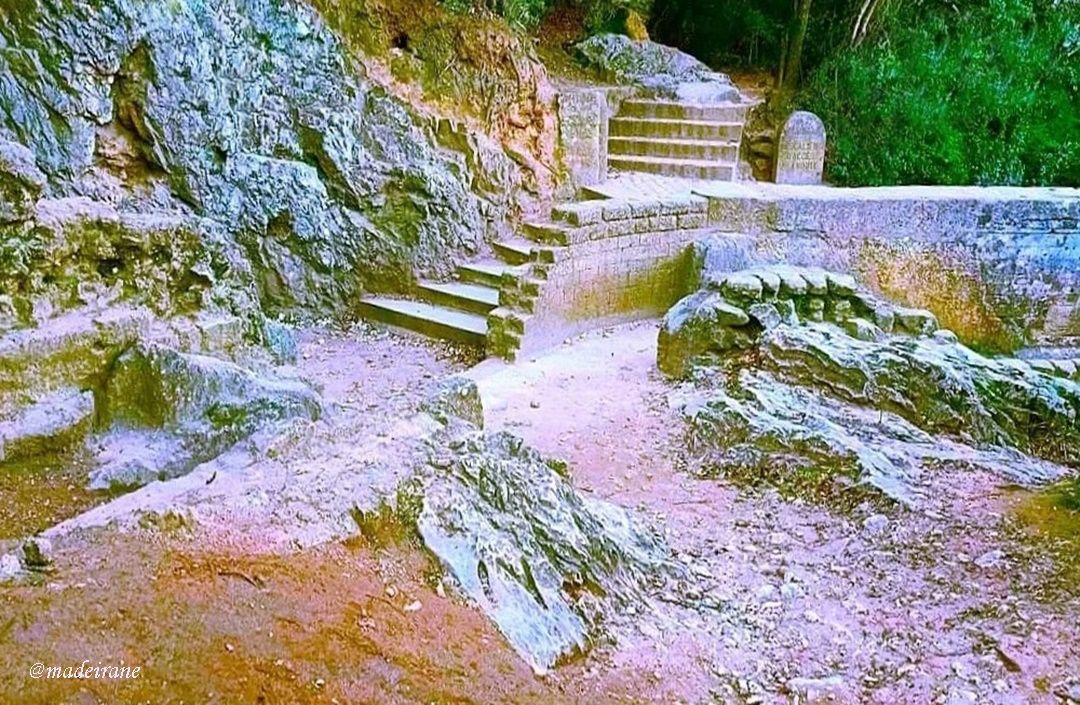
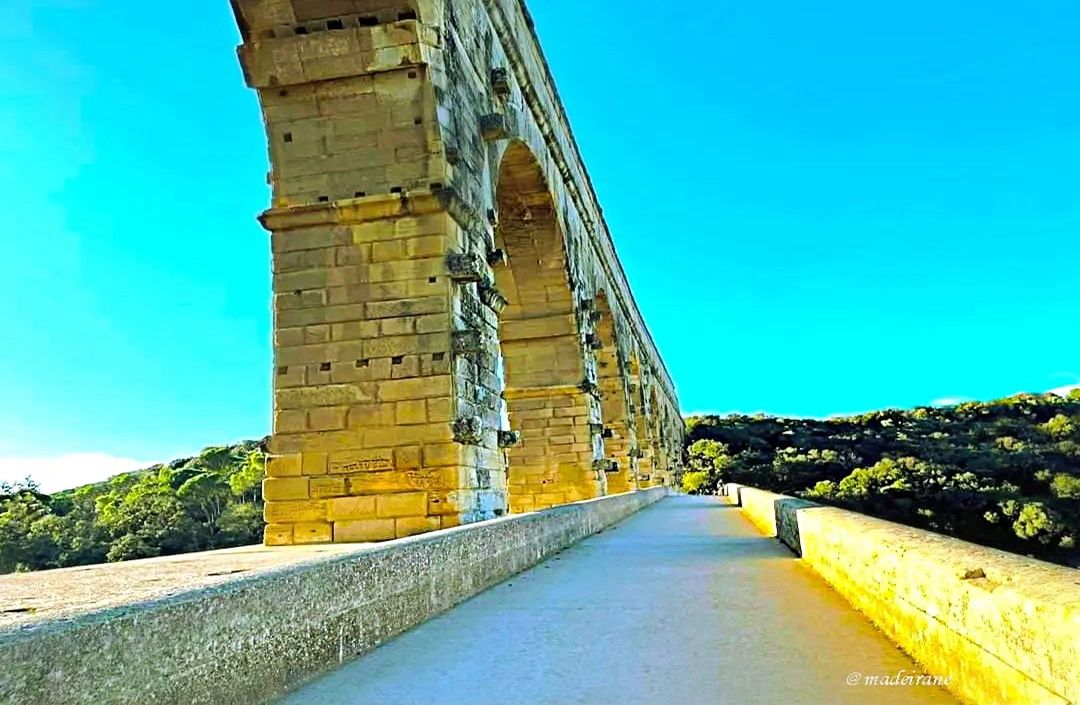
The handsome stone giant, towering over the banks of the Gard River (now Gardon), fully deserves the description “unique”. This is the highest bridge of all survived ancient bridges. And the only (again among those survived on our planet) Roman bridge that has a three-tier structure. Hi-Tech for its time.
Chains of arches, placed one on top of the other... It’s incomprehensible, but this colossus, almost 50 meters high (i.e., by today’s standards, such a respectable city high-rise building) looks unusually airy, like a lady’s jewelry from a famous jeweler. Soaring power... In relation to something else, such a combination of words is almost like an oxymoron, but the impression of the appearance of the aqueduct cannot be formulated otherwise.
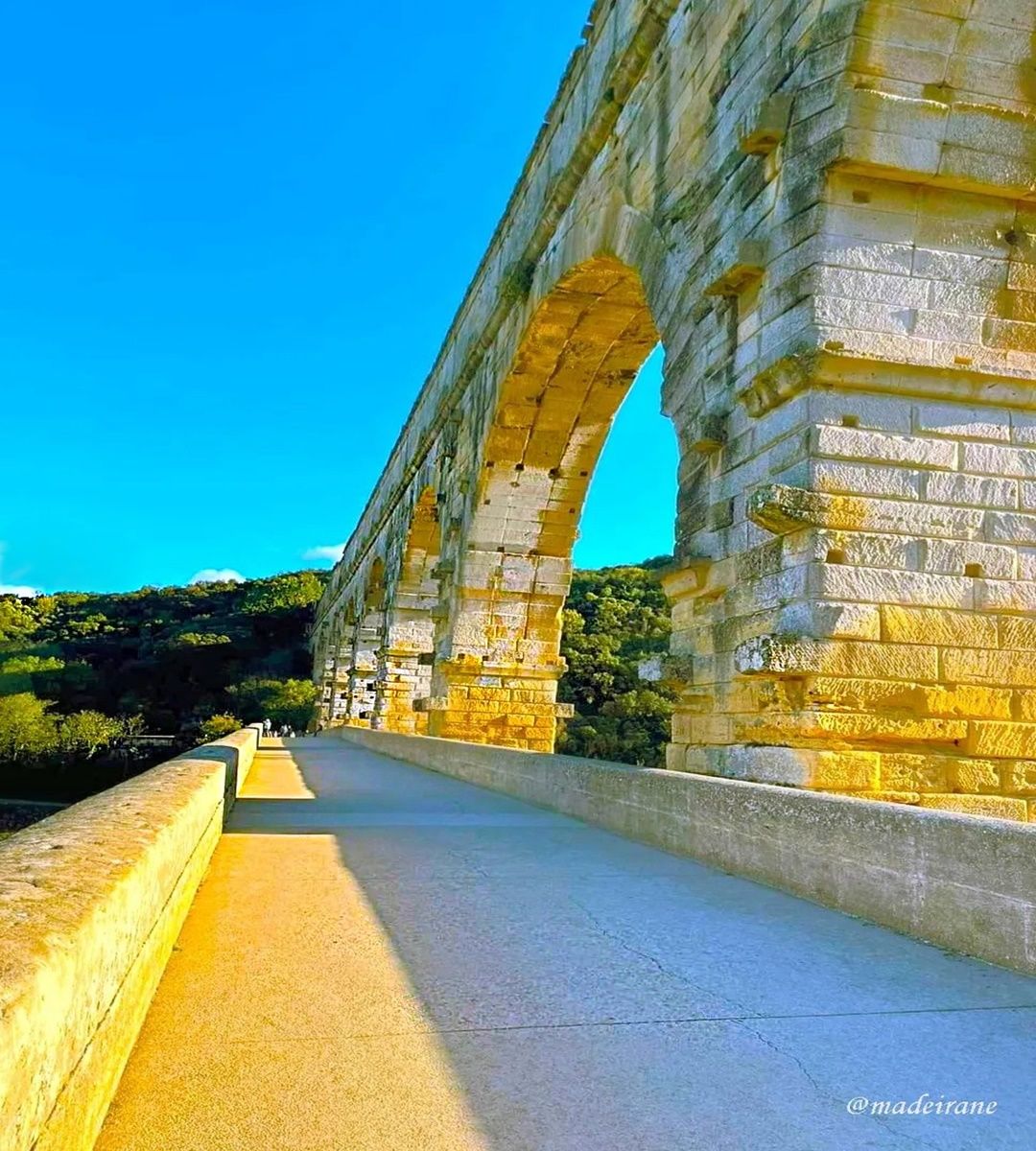
It’s hard to believe that the multi-ton limestone blocks that make up the Pont du Gard are not held together with any mortar. Yes, the ancient Romans, like the ancient Greeks, were gods in construction.
And on a sunny day, under the bright blue sky of the French south, it seemed that the bridge was cast of gold. However, it really has a place in the golden fund of world architecture.
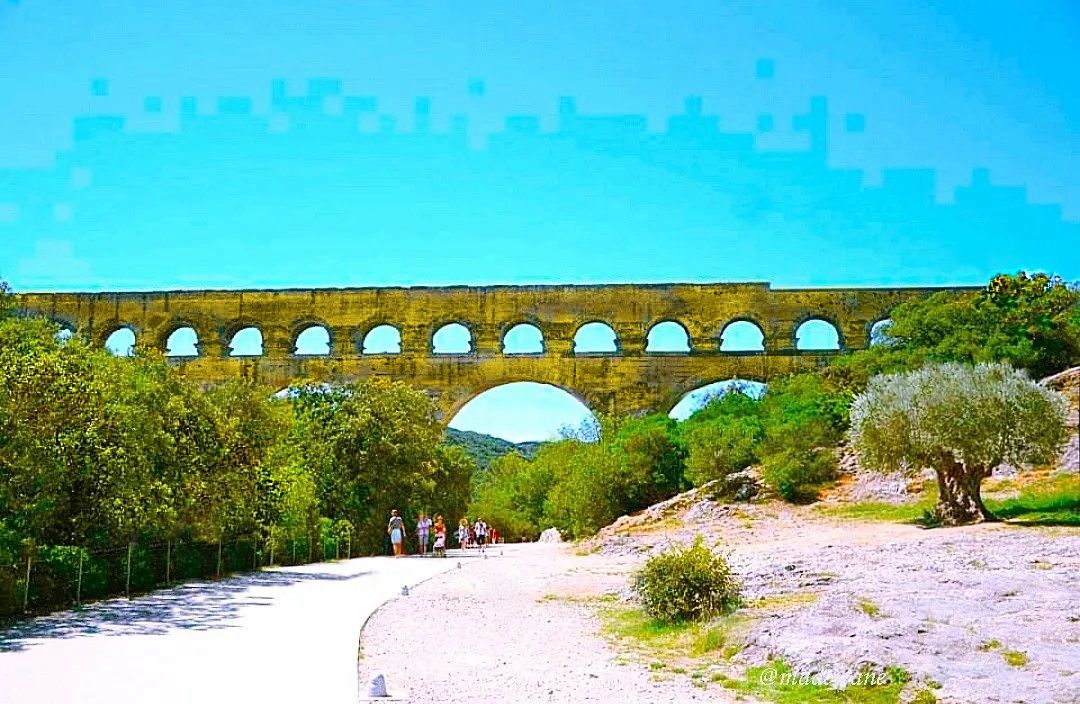
I want to review any arch and any detail in general from different angles. Bringing any material objects to perfection - in my opinion, this quality was in the blood of the Romans.
Since the aqueduct was built under Claudius I and Nero, this means that the bridge is approximately two thousand years old... Almost the entire history of mankind fits into its history - counting from the birth of Christ. All inventions and geographical discoveries, architecture, poetry, prose, painting and sculpture, music, philosophy, wars, revolutions, economic crises and natural disasters. And how much more remains to be included!
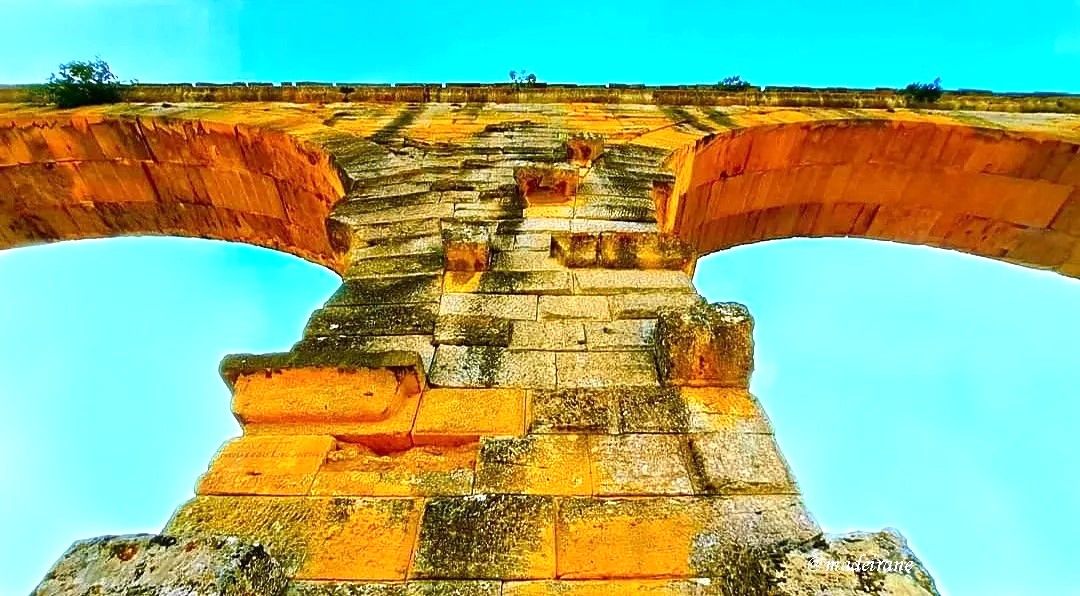
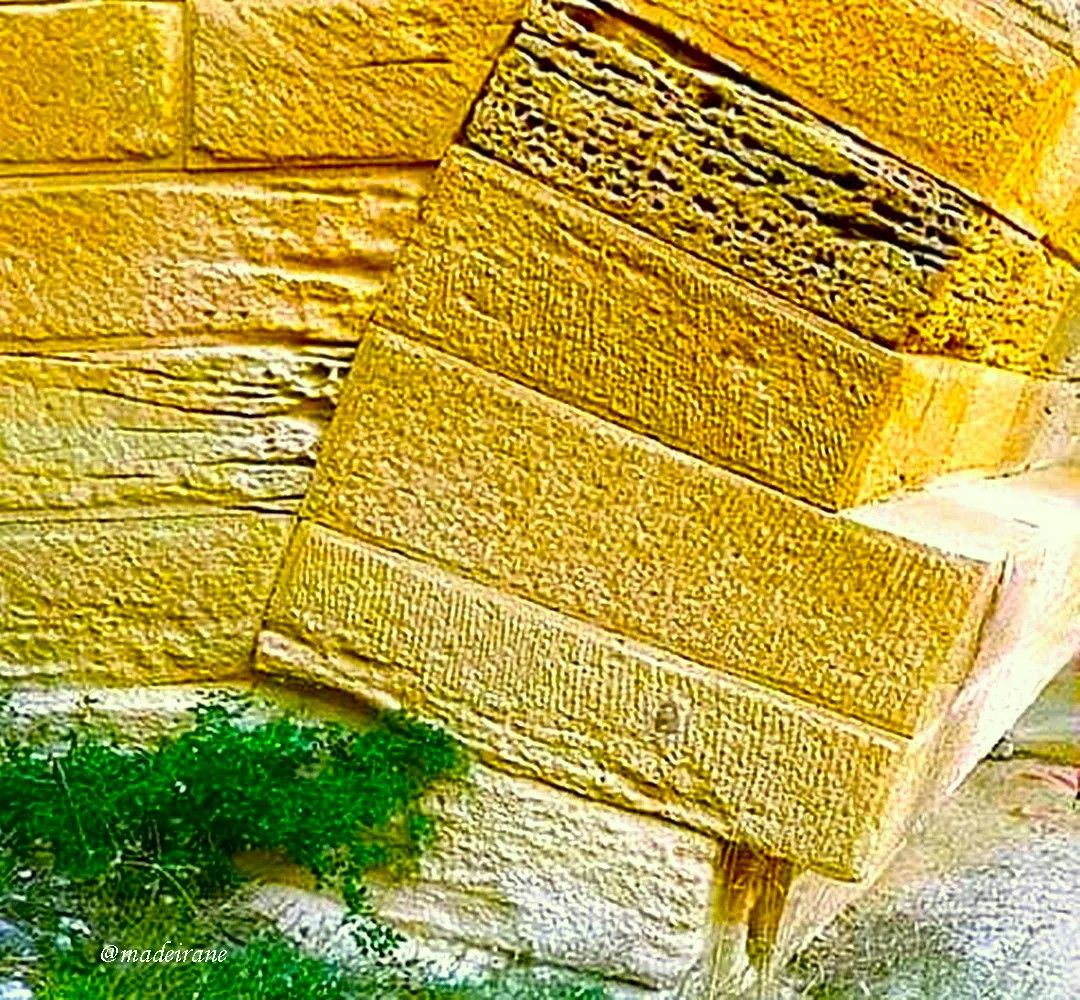
I also consider the bridge as a monument to the engineering genius of the Romans. I was impressed not only by its appearance, but also by the numbers characterizing the productivity of its labor. For five centuries, Pont du Gard was one of the links in the system that uninterruptedly supplied running water to the rich and excellently landscaped city of Nimes with a population of 20 thousand, supplying up to forty thousand cubic meters per day. The water was supplied from a source located in the city of Uzes (approximately 50 kilometers from here), flowed at an angle and on this section of the route moved along a gutter laid on the third tier.
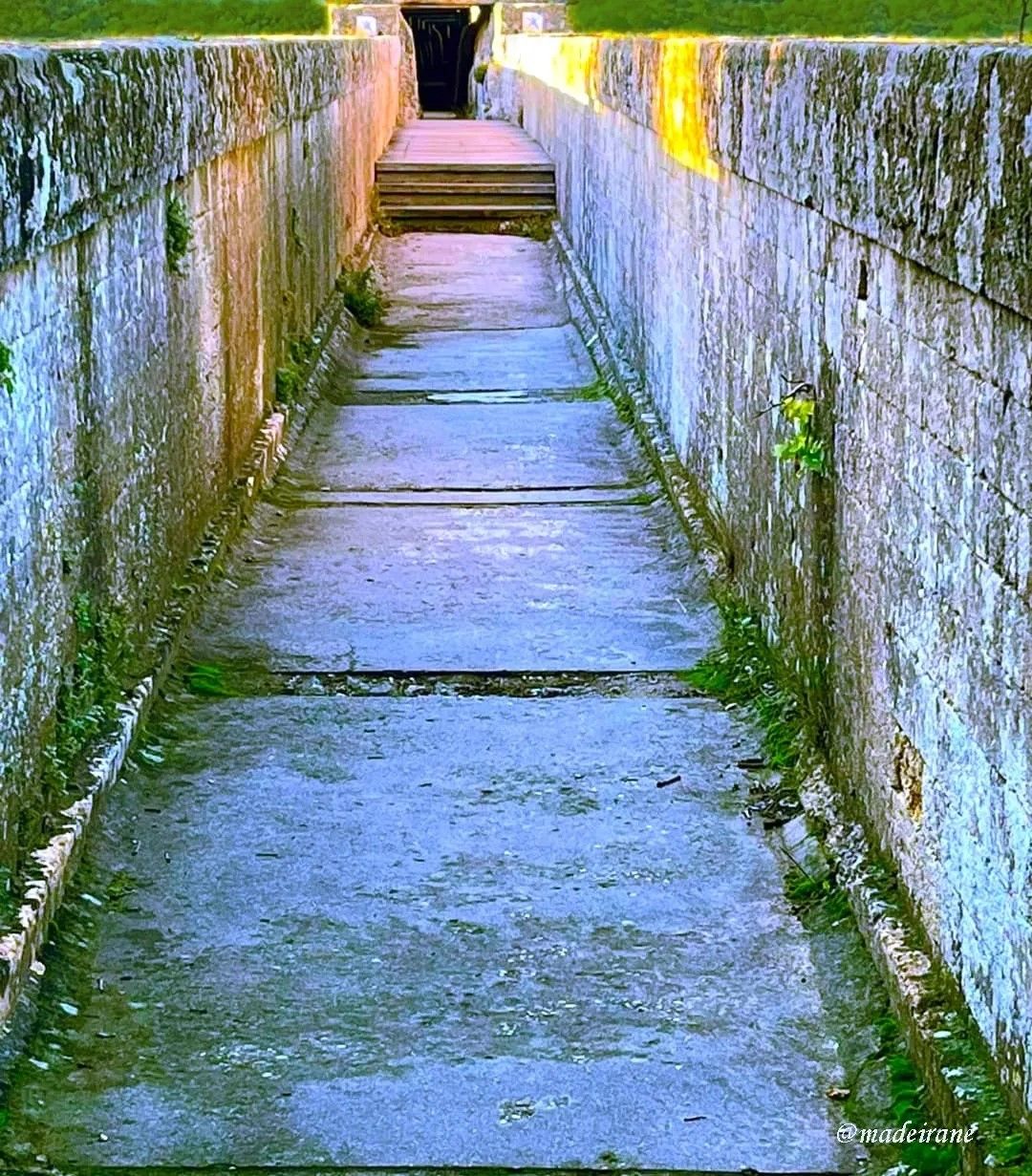
I am amazed by the strength of this building and the level of engineering thinking of these people, who were able to foresee and take into account many different nuances when constructing the aqueduct: correct determination of the angle of inclination, cleaning the bottom from mineral salts, possible floods, etc.
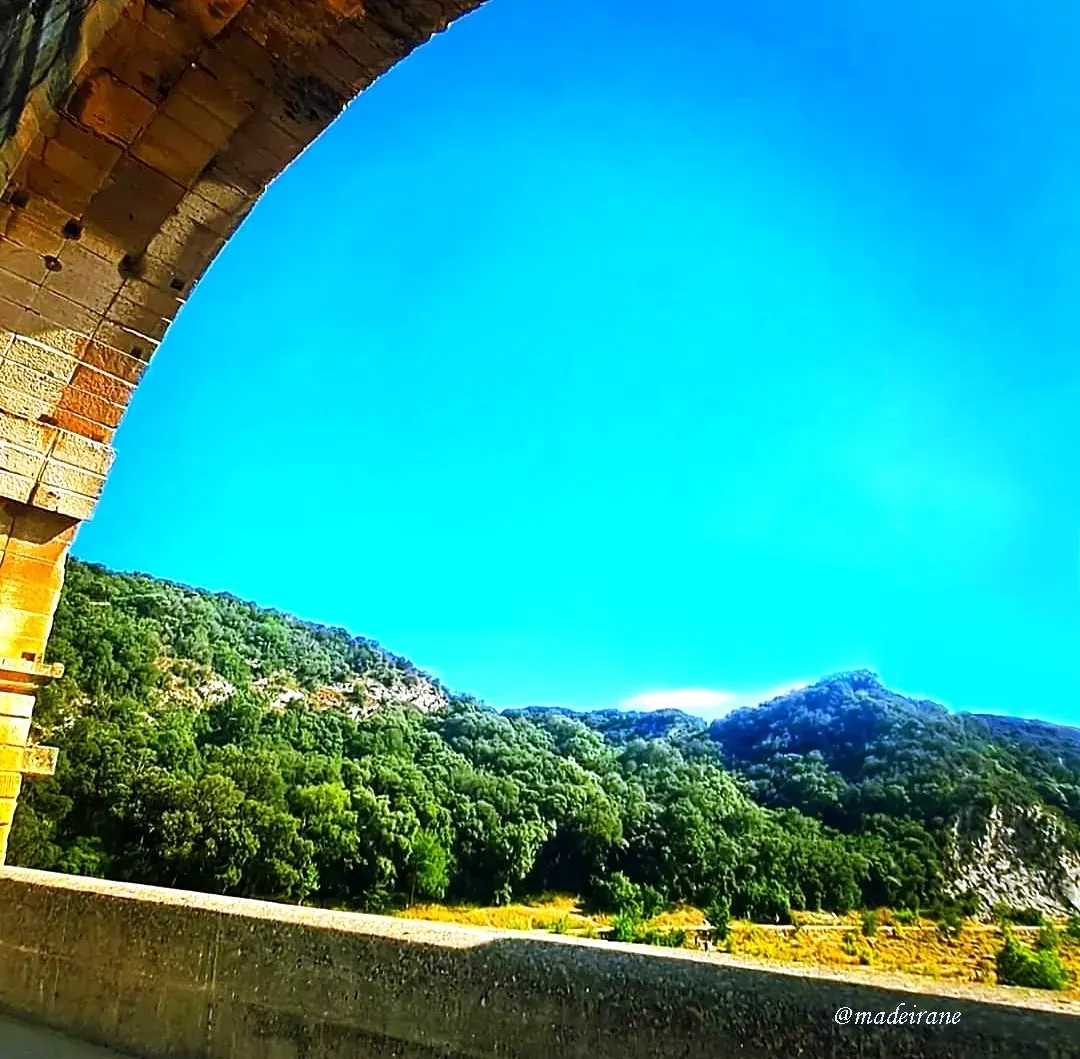
In my opinion, with such a biography, it is high time for Pont du Gard to be placed under an armored glass cap. Or, at a minimum, oblige all tourists to walk along it without shoes and only on tiptoe. In fact, access to the middle tier is absolutely free, but access to the upper tier is for a fee and only accompanied by a guide. And, besides, there is a taboo about jumping from the parapet into the water.
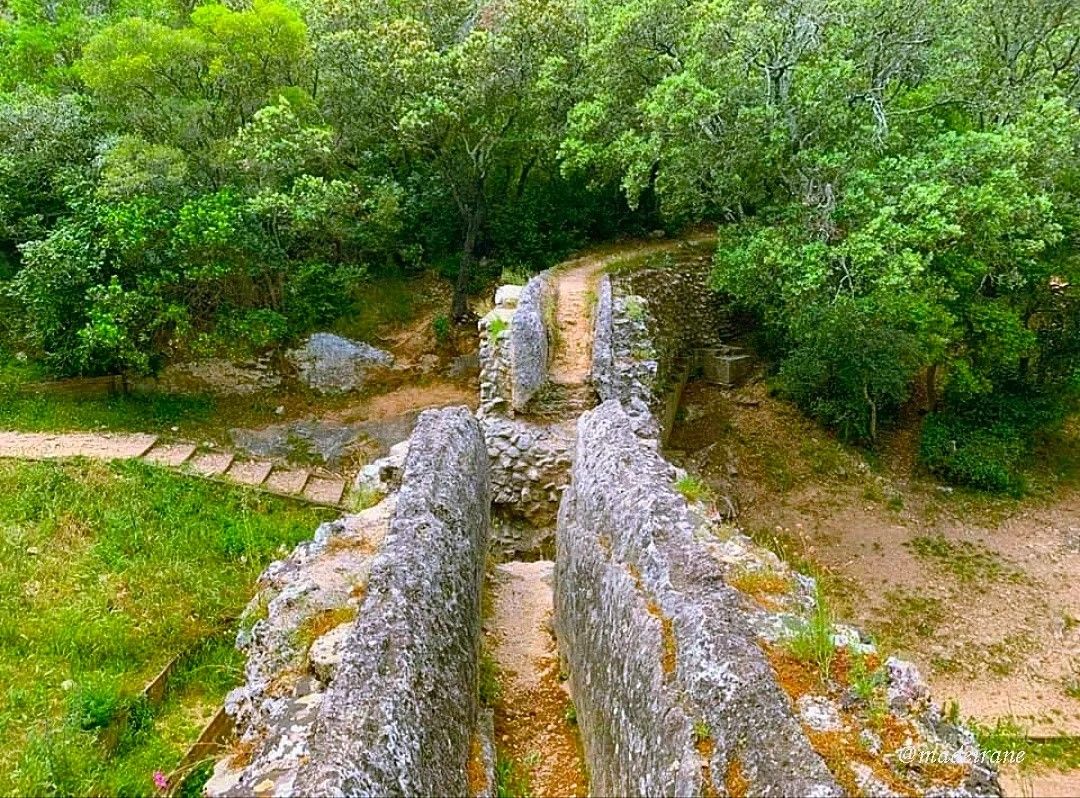
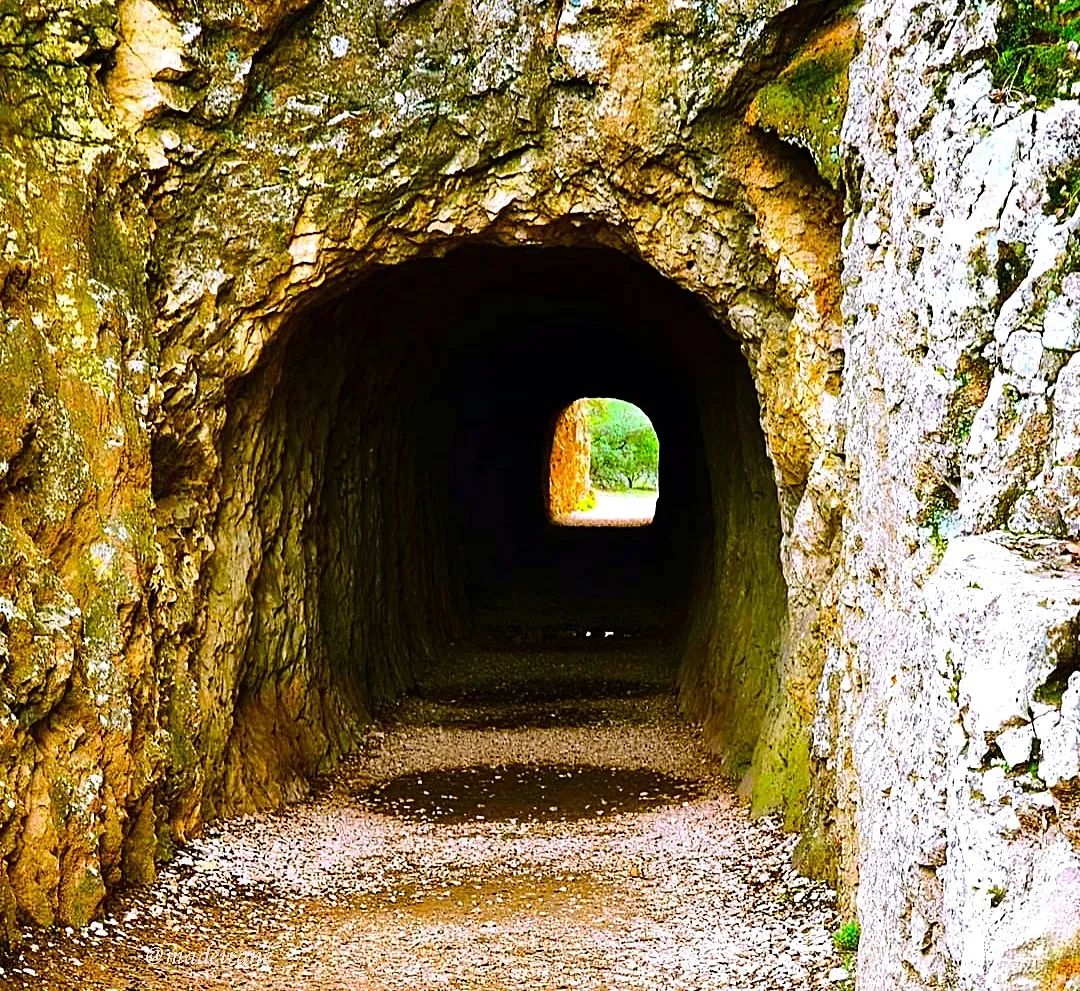
We went to the bridge. We walk and admire. Not only architecture, but also nature. The places here are just right to take up brushes and paints.
There are pleasant recreation areas on both banks of the river (one with plane trees, the other with Mediterranean vegetation, landscaped meadows and oak trees), and many people come here for traditional summer leisure activities: picnics, swimming in the river or kayaking.
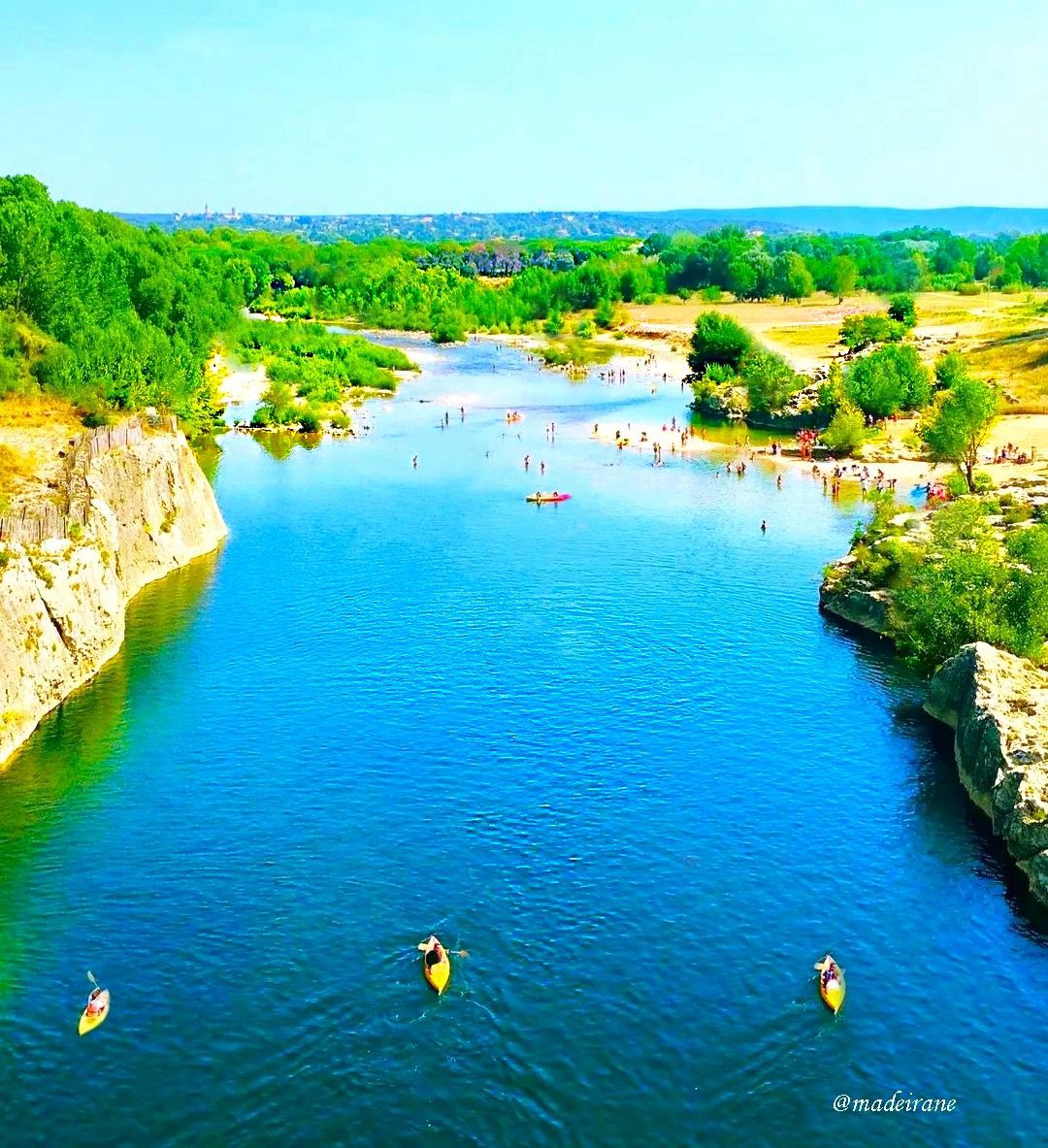
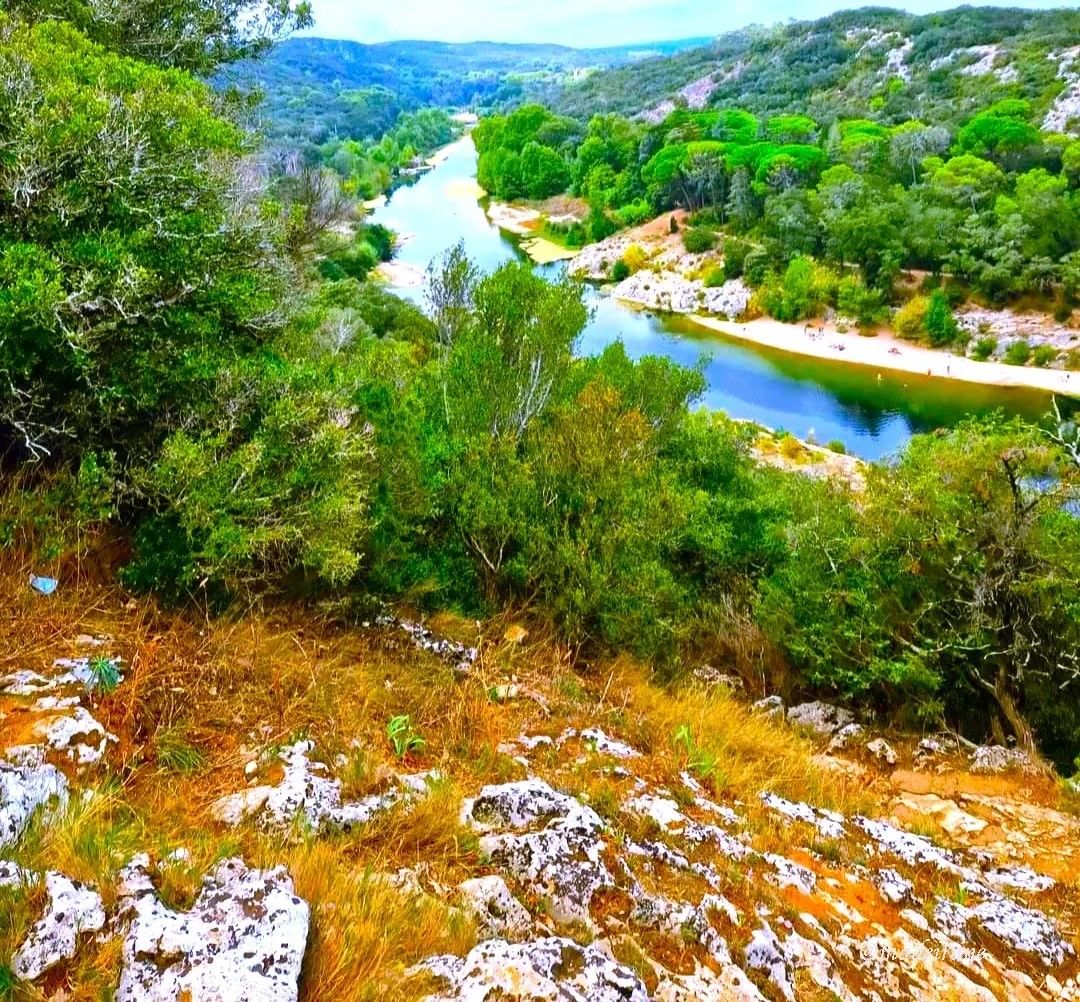
Translated from Lithuanian via DeepL (free version).
Tęsdama rašymą apie Prancūzijos Provansą, turiu paminėti Pont du Gard akveduką. Provansą dar labiau vertinu dėl to, kad jis yra didelis senovės romėnų architektūros paminklų lobynas. Paminklų, kurie stebina savo didingumu ir išsaugota būkle.
Provanse galėjau važiuoti per daugybę senovės romėnų "adresų": Oranžas, Sen Remi de Provanso miestas, Arlis... Į šį sąrašą pateko ir į UNESCO pasaulio paveldo sąrašą įtrauktas paminklas - legendinis Pont du Gard akvedukas. Ir jis buvo ne tik pažymėtas, kad jį reikia aplankyti, bet ir paryškintas raudonu žymekliu bei pažymėtas šauktuku - kaip vieta, kurią privaloma aplankyti.
Atvykę į Provansą, su vyru laikėmės taisyklės į ekskursijas vykti anksti ryte, kad sutrumpintume viešnagę po negailestingai kepinančia saule ir pamatytume kuo daugiau. Iš Avinjono, kur laikinai apsigyvenome, automobiliu važiavome apie pusvalandį.
Įėjimas į greta akveduko esančią teritoriją yra mokamas. Iš specialiai tam skirto automato paėmėme stovėjimo bilietą, tačiau sumokėjome ne iš karto, o prieš išvažiuodami.
Parkavimo bilieto kaina priklausė nuo naudojamos transporto priemonės tipo ir paros laiko. Taigi, šeimai ar kompanijai, kurią sudaro nuo dviejų iki penkių asmenų, atvykusių tuo pačiu automobiliu, dienos tarifas buvo 18 EUR, o vakaro - 10 EUR. Kitaip tariant, kuo didesnė kompanija, tuo labiau apsimoka čia atvykti vienam asmeniui.
Prieš apsilankydami Nimo mieste, t. y. mieste, kuriam akvedukas buvo skirtas, nuvažiavome iki akveduko (tiksliau, iki tilto, kuris buvo svarbi jo dalis). Kelias nuo įvažiavimo į akveduką buvo pavėsinga platanų alėja, besiribojanti su vaizdingomis uolomis su urvais.
Gražus akmeninis milžinas, iškilęs virš Gardo (dabar Gardono) upės krantų, visiškai nusipelno apibūdinimo "unikalus". Tai aukščiausias iš visų išlikusių senovinių tiltų. Ir vienintelis (vėlgi tarp išlikusių mūsų planetoje) romėnų tiltas, turintis trijų pakopų konstrukciją. Savo laikmečiui aukštųjų technologijų.
Grandinės iš arkų, išdėstytų viena ant kitos... Nesuprantama, bet šis beveik 50 metrų aukščio kolosas (t. y. pagal šiandieninius standartus toks garbingas miesto daugiaaukštis pastatas) atrodo neįprastai erdvus, tarsi garsaus juvelyro damos papuošalas. Kylanti galia... Kalbant apie ką nors kita, toks žodžių junginys beveik panašus į oksimoroną, tačiau akveduko išvaizdos įspūdžio kitaip suformuluoti neįmanoma.
Sunku patikėti, kad daugiatoniai kalkakmenio blokai, iš kurių sudarytas Pont du Gard, nesujungti jokiais skiediniais. Taip, senovės romėnai, kaip ir senovės graikai, buvo statybos dievai.
O saulėtą dieną, po skaisčiai mėlynu Prancūzijos pietų dangumi, atrodo, kad tiltas buvo nulietas iš aukso. Tačiau jam iš tiesų priklauso vieta pasaulio architektūros aukso fonde.
Noriu apžvelgti bet kurią arką ir apskritai bet kurią detalę iš įvairių kampų. Bet kokių materialių objektų privedimas iki tobulumo - mano nuomone, ši savybė buvo romėnų kraujyje.
Kadangi akvedukas buvo pastatytas valdant Klaudijui I ir Neronui, tai reiškia, kad tiltui maždaug du tūkstančiai metų... Į jo istoriją telpa beveik visa žmonijos istorija - skaičiuojant nuo Kristaus gimimo. Visi išradimai ir geografiniai atradimai, architektūra, poezija, proza, tapyba ir skulptūra, muzika, filosofija, karai, revoliucijos, ekonominės krizės ir stichinės nelaimės. Ir kiek dar daug visko reikia įtraukti!
Tiltą taip pat laikau paminklu romėnų inžinerijos genijui. Mane sužavėjo ne tik jo išvaizda, bet ir skaičiai, apibūdinantys jo "darbo" produktyvumą. Penkis šimtmečius Pont du Gard buvo viena iš sistemos, kuri nepertraukiamai tiekė tekantį vandenį turtingam ir puikiai apželdintam dvidešimt tūkstančių gyventojų turinčiam Nimo miestui (buvusiam Nemausui), grandžių, tiekiančių iki keturiasdešimties tūkstančių kubinių metrų vandens per dieną. Vanduo buvo tiekiamas iš šaltinio, esančio Uzeso mieste (maždaug už 50 kilometrų), tekėjo kampu ir šioje trasos atkarpoje "judėjo" trečiame lygyje nutiestu lataku.
Mane stebina šio statinio tvirtumas ir šių žmonių inžinerinio mąstymo lygis, nes statydami akveduką jie sugebėjo numatyti ir atsižvelgti į daugybę įvairių niuansų: teisingą nuolydžio kampo nustatymą, dugno valymą nuo mineralinių druskų, galimus potvynius ir pan.
Mano nuomone, turint tokią biografiją, pats laikas Pont du Gard uždengti šarvuotu stiklo dangčiu. Arba bent jau įpareigoti visus turistus vaikščioti juo be batų ir tik ant pirštų galiukų. Tiesą sakant, patekimas į vidurinę pakopą yra visiškai nemokamas, tačiau į viršutinę pakopą - mokamas ir tik lydint gidui. Be to, draudžiama šokinėti nuo atbrailos į vandenį.
Einame prie tilto. Vaikštome ir grožimės. Ne tik architektūra, bet ir gamta. Vietos čia kaip tik tinkamos paimti teptukus ir dažus:
Abiejuose upės krantuose (viename auga platanai, kitame - Viduržemio jūros augmenija, apželdintos pievos ir ąžuolai) įrengtos malonios poilsio zonos, daugybė žmonių čia atvyksta tradiciniam vasaros laisvalaikiui: iškyloms, maudynėms upėje ar plaukiojimui baidarėmis.
💝💝💝💝💝💝💝💝💝💝
With love @madeirane
© 2023
